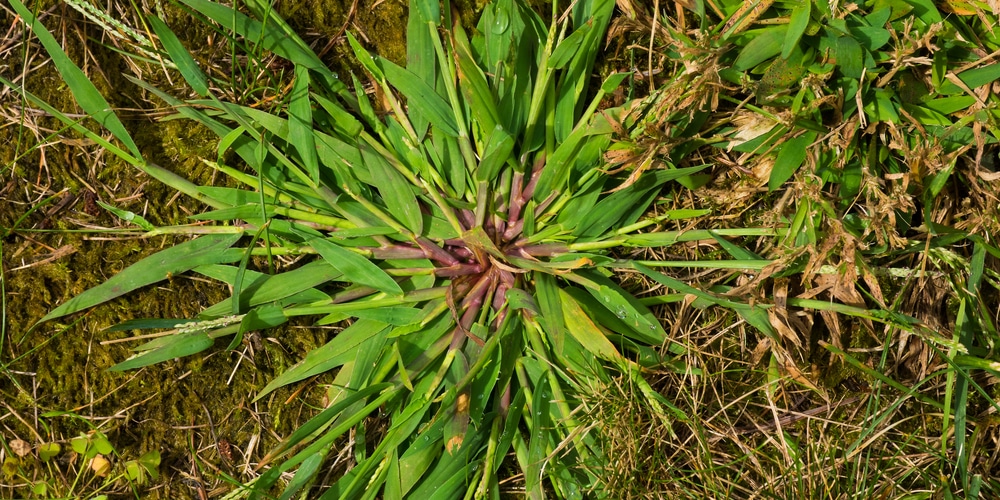Neatly cropped lawns require time, energy, and effort to maintain. While it’s considered the ultimate pride and joy for some homeowners, others see it as a source of never-ending anxiety. If you’re one of the latter, then you’re no stranger to some of a few annoyances that come with having a lawn.
Common weeds, like crabgrass and dandelions, are easy to spot and relatively simple to get rid of. However, there are times that we may spot wide blade grass types. To make it even more annoying, most of these grass types are usually discolored, making your lawn look patchy and unkempt.
Why Do I See Wide Blade Grass on my Lawn?
In the middle of nowhere, you’ve noticed wide-leafed grass that looks a little out of place. There’s no denying that we love uniformed lawns – it gives the illusion of space and cleanliness. But a few rogue wide-leafed types of grass can instantly ruin that look.
So, what is this grass, and why is it on my lawn? The answer is both simple and complicated. While your lawn may look picture perfect during the spring, there’s a high chance that beneath those blades of grass are a few weed seeds just waiting to germinate.
Crabgrass, among other wide blade types of grass, usually lay dormant during the cooler months. But as soon as the temperatures start to rise, they begin to germinate and grow rapidly. This is why you suddenly notice them in the middle of summer.
Unfortunately, once these grasses have taken over your lawn, they’re not easy to get rid of. This is where the problems arise, and we start to see why wide-blade grass is such a pain.
How Does It Affect Your Lawn?
While most types of grasses have a shallow root system, most wide blade grass types like crabgrass have a deep one. This is why they’re so difficult to get rid of – the roots go deep, making it nearly impossible to get rid of with typical herbicides.
The deeper the root system, the more water, and nutrients these plants will take from your lawn. This means that your other grasses will start to suffer, and you’ll see a change in the color and texture of your lawn.
Aside from competing nutrients from the soil, the fact that these grasses have wider blades means that they can block out sunlight from reaching your other grasses. This puts them at a disadvantage, as they won’t be able to photosynthesize properly.
Types of Wide Blade Grasses
There are a few different types of wide blade grasses, but the most common ones are:
- Crabgrass: This is probably one of the most common wide blade grasses. It rapidly grows and spreads and has a deep root system.
- Tall Fescue: Another common type of wide blade grass, Tall Fescue is easily recognizable by its long, thin blades. One of the most difficult things about tall fescue grasses is that they are perennial grasses. Unlike crabgrass which is an annual, tall fescue will stay there on your lawn unless you do something about it.
- Goosegrass: This is also referred to as the silver crabgrass, which is annual and somehow difficult to get rid of.
- Orchard Grass: It grows in bunches and is more common in pastures than on home lawns.
How to Get Rid of Wide Blade Grass?
Prevention is always the best method, and this can be done by mowing your lawn regularly and keeping it at the right height. Additionally, you should also water your lawn regularly and make sure that it’s getting the right amount of nutrients.
However, there are some instances that regardless of how well you take care of your lawn, crabgrass and other wide blade grasses will still manage to find their way in.
The best way to get rid of these types of grass is by using a pre-emergent and post-emergent herbicide. A pre-emergent herbicide, such as a crabgrass preventer will prevent the weed seeds from germinating, while a post-emergent herbicide will kill the weeds that have already taken root. There are products in the market that functions as both, making it a more effective solution.
Application of herbicides is best done early in the year before the weeds have a chance to germinate. But if you’re dealing with an infestation, then you can apply it any time of the year. Follow-up applications may be necessary to ensure that the weeds are completely eradicated.
Alternatively, if you have a smaller patch of wide blade grass, you can try and dig it out manually. This is a more tedious process but works fairly well if the infestation isn’t that bad. It’s also an ideal solution for gardeners who don’t want to use chemicals on their lawns.
Wide Blade Grass: Final Thoughts
Wide blade grass can be a real pain to deal with and can take over your lawn if you’re not careful. One of the best ways to control and get rid of wide blade grass is the use of pre-emergent herbicide. This is usually followed up with a post-emergent herbicide to ensure that unwanted grass types and weeds are completely removed.
You can also try and dig it out manually, but this is a more tedious process. Whichever method you choose, make sure to act quickly before the wide blade grass takes over your lawn!

